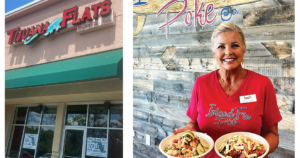
Snarled traffic, hazardous roads, dangerous intersections. The solutions to all of these problems are out there. The question facing voters this November, however, are you willing to pay for them?
Against the odds and, in less than two months, a group called All For Transportation (AFT) used a charter amendment by petition process to collect enough signatures to get a one-cent county sales tax hike on the ballot for the Nov. 6 election, which would boost the county’s current sales tax from 7 percent to 8, or one penny for every dollar you spend.
Funded primarily by Tampa Bay Lightning owner Jeff Vinik and local philanthropist Frank Morsani, AFT enlisted a host of volunteers and paid Revolution Field Strategies, a grassroots organizing and public affairs consulting firm, to collect the needed 48,760 signatures. In all, AFT collected 77,000 signatures and had 50,709 signatures verified in August to put the referendum on the ballot.
The group says that the tax will raise $280 million per year for Hillsborough County to fund transportation improvements for 30 years. Those improvements include road and bridge improvements, relieving rush hour traffic, making walking and biking safer and expanding and improving public transit options.
Previous transportation referendums in Tampa Bay have not had much luck. In 2010, Moving Hillsborough Forward was voted down 58-42 percent. In 2014, Greenlight Pinellas was soundly defeated 62-38 percent. And, in 2016, Go Hillsborough, to be funded by a half-cent surtax, never even made it onto the ballot, as the Hillsborough County Commission voted it down twice.
In each case, a mistrust of government and its ability to properly spend the money worked against the transportation plans.
That is what makes this latest foray into transportation funding different, says Tyler Hudson, a Tampa lawyer and the chair of AFT.
“Our plan is the most balanced plan that’s ever been brought to voters,” he says. “Forty five percent of the money goes to transit, and 55 percent is for roads. And, it has the strongest oversight component of any plan ever offered.”
 Hudson says an independent oversight committee comprised of 14 citizens will make sure the money goes where it was intended to, and an audit will be conducted yearly. Every agency requesting money has to produce a public list annually detailing how the proceeds will be spent, and the committee will vote to approve (or not) each item.
Hudson says an independent oversight committee comprised of 14 citizens will make sure the money goes where it was intended to, and an audit will be conducted yearly. Every agency requesting money has to produce a public list annually detailing how the proceeds will be spent, and the committee will vote to approve (or not) each item.
“This is not a blank check,” Hudson says.
Tampa Bay’s transportation issues may be reaching a tipping point, says AFT’s Christina Barker.
“It’s the most critical issue facing Hillsborough County,” she said. “In our polling, transportation wins every time.”
Like the half-cent education tax being proposed on the same ballot, AFT is letting voters know the details of their plans, releasing a list of signature projects and programs that the money would be used for.
Those that affect our area include improvements at the troublesome Cross Creek Blvd. and Bruce B. Downs (BBD) Blvd. intersections, the potential widening of New Tampa Blvd. from the New Tampa Gateway Bridge in West Meadows to BBD, upgrades to New Tampa’s multi-use paths and trails, and yes, even an East-West road extension from New Tampa Blvd. to a new exit at I-275.
The East-West Connector Rd., as it was often called, has been discussed since the 1980s and was at the center of an intense debate between many residents of West Meadows and Tampa Palms Areas 4 & 8 who were opposed to the project — and the rest of the New Tampa. It was eventually scuttled in 2008.
Jean Duncan, the City of Tampa’s director of transportation and stormwater services, says the money raised by the tax increase would have an impact in New Tampa, and throughout the county. She says more round-a-bouts, including some in New Tampa, can be constructed, streets can be made calmer, and things like a speed limit reduction on Tampa Palms Blvd., as well as road restriping, would produce changes that are noticeable.
“The plan certainly has a healthy distribution of money between maintenance and adding in some of the new things we need,” Duncan said.
Many of those things have been in the Metropolitan Planning Organization (MPO)’s Long Range Transportation Plan for years awaiting funding.
“If this passes, things will get done more quickly,” Hudson says. “We are telling people this is not a moonshot. You are going to see changes within months. You will see immediate improvements.”
The plan has its detractors, but has received endorsements from the North Tampa Bay Chamber of Commerce, as well as the Greater Tampa Chamber of Commerce.
“The choice is on the ballot,” says Barker. “You either vote for a plan that is balanced and driven by community priorities, or you vote no and you get the status quo.”




No comment yet, add your voice below!